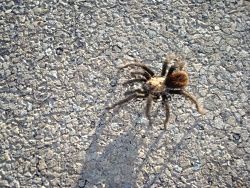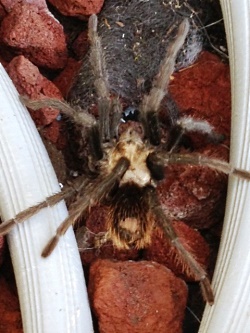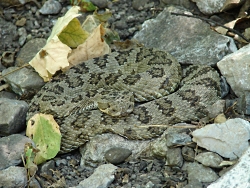
Courtesy Michigan Department of Agriculture
Hi, I’m Holly Strand from Stokes Nature Center in beautiful Logan Canyon.
Bill Holm wrote and taught in the English department at Southwest Minnesota State University for 27 years. He helped me come to terms with one aspect of Utah nature that I found troublesome at first —the ubiquitous and abundant boxelder bug.
“My boxelder bugs have odd preferences,” Holm wrote. “They love radio dials, phonograph speakers, amplifiers, pianos, and harpsichords. Some would argue that this is because of the warmth and vibrations, but I prefer to think it is because of their taste for Bach and Vivaldi.”
According to Utah State University’s Cooperative Extension, the red and white bugs are essentially harmless. They stain walls or carpets if you squish them. However, they are annoying primarily because they enter homes and other buildings in large numbers. Once in, they’ll find their way into your personal effects. Like your hair or your toothbrush or the glass of water you keep on the bedside table.
After hearing me go off on a boxelder bug rant, a friend gave me Holm’s book Boxelder Bug Variations: A meditation of an idea in language and music. It changed my attitude toward with household invaders, as now I think of them as poetic. Maybe if I read a few verses, you will feel the same:
First, a boxelder bug prayer:
I want so little
For so little time
A south window,
A wall to climb,
The smell of coffee,
A radio knob,
Nothing to eat,
Nothing to rob,
Not love, not power,
Not even a penny,
Forgive me only
For being so many.
And finally, three boxelder bug haiku:
(1) Careful if you kill him!
There may be an afterlife
For both of you.(2) Those black spots in your lamp?
Only bugs who didn’t make it
Into the next world.(3) The piano string stops trembling
But boxelder bugs
Keep dancing.
Thanks to Jen Levy for introducing me to boxelder bug poetry, and to Milkweed Editions for permission to reproduce Bill Holm’s work.
For Wild About Utah and Stokes Nature Center, I’m Holly Strand.
Credits:
Photo: Courtesy Michigan Department of Agriculture
Text: Stokes Nature Center: Holly Strand
Sources & Additional Reading
Boxelder Bug Variations: A Meditation on an Idea in Language and Music, Holm, Bill, 1985, Minneapolis, MN: Milkweed Editions https://www.milkweed.org/
Boxelder Bugs Fact Sheet, Erin Hodgson, Alan H. Roe, USU Cooperative Extension:
https://extension.usu.edu/files/factsheets/boxelder.pdf











